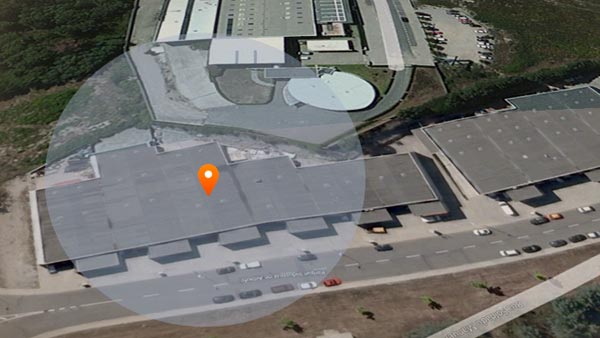Displax is a hardware manufacturer expert in Projected Capacitive multitouch technology for Large Format Displays, typically from 30'' to 100''.
Displax develops, manufactures and markets multitouch products & technology. The main product is Skin Multitouch, a transparent foil that can be applied to non-conductive surfaces and turn them multitouch.
Based on that technology, other products are also produced including Oqtopus, a state-of-the-art multitouch table with a stunning design and Pad, an all-in-one multitouch display with a totally flat surface and sleek design.
Displax manufacturing facilities are located in the head-quarter, together with the rest of the company, to ensure an agile and continuous flow of feedback with the R&D and Sales teams.
The Skin Multitouch sensor and controller are designed in-house, by the R&D team. Displax Production team manufactures, assembles and handles all testing prior to shipping. The best equipment for the production process are used and the team has the best expertise and skills to ensure high levels of product quality.
The factory production process was designed to scale with the market growth forecasts. This ensures that Displax is able to quickly answer to changes in demand and increase the production capacity.
Displax was born in 2000.
Initially, the main focus were contents developed on a project-by-project basis. Displax soon realized the potential of contents for new ways of human-computer interaction that were emerging from labs. To leverage this opportunity, Displax started a partnership with Minho University to anticipate the upcoming changes in the market landscape.
In 2004, Displax launched the first interactive product, Displax Interactive Window, a transparent touch technology to be applied in shop windows. Other products followed as well as projects.
Displax started to develop a network of international partners to promote and distribute its products locally using the internal skills in design, software and hardware. As time went by, Displax skills expanded, in hardware, software and electronics as well as knowledge about the market.
Around 2008 Displax began researching a way to detect simultaneous touch points using a projected capacitive sensor, as it started to be clear that multitouch would be a trend and that ProCap would be the most suited technology for different scenarios and uses.
In 2010, at Integrated Systems Europe, Displax unveiled the prototype of a multitouch foil, what would later be launched as Displax Skin Multitouch.
For the first time a flexible ProCap multitouch technology was developed. As anticipated, the market received the news with high esteem and enthusiasm.
WIRED - "If Displax can do this for larger displays, it will really be one of the first companies to do what we call massive multitouch."
Time Tech - "We’re inching closer and closer to Minority Report status and Displax could be the company to put us over the edge."
In 2011, Displax started shipping Skin Multitouch, with 6 and 12 finger touches, Windows 7 driver and sizes from 30'' up to 100''. One year after, thousands of units were being used all around the world in cutting-edge interactive and innovative projects.
Since 2012, the Skin Multitouch is available in versions of 2, 10 and 20 finger touches and supports Windows 8, 7, Ubuntu (Linux), TUIO Protocol, Mac OS and Raspbbery Pi.
Displax Skin Multitouch, Patent Pending PCT/IB2010/054397 and others, is the first large format through glass multitouch. Displax technology features:
XTR-Shield™, a unique proprietary noise filtering technology that allows the sensor to be closer than ever to the display, ahead of traditional sensors. As a consequence, the gap between the sensor and display is minimal and parallax is no longer an issue.
XTR-Pressure™ adds a third dimension to touch. In addition to coordinates X and Y, Displax offers a third value, for different levels of touch pressure. Developers can take advantage of this feature and create incredibly innovative new contents.
Improved touch detection algorithms, firmware and drivers are a result of the continued efforts of Displax in R&D.
 Indoor Installation
Indoor Installation
 Outdoor Installation
Outdoor Installation
 Stage · Rental
Stage · Rental
 Shops · Windows
Shops · Windows
 Cloud
Cloud
 COEX
COEX
 AIO
AIO
 Indoor · Single Side
Indoor · Single Side
 Indoor · Double Side
Indoor · Double Side
 Touch On Glass
Touch On Glass
 Desay Catalog
Desay Catalog
 NovaStar Cloud Catalog
NovaStar Cloud Catalog
 NovaStar COEX Catalog
NovaStar COEX Catalog
 NovaStar AIO Catalog
NovaStar AIO Catalog
 GlassVu Pixel Catalog
GlassVu Pixel Catalog
 Displax Catalog
Displax Catalog Brompton Catalog
Brompton Catalog



